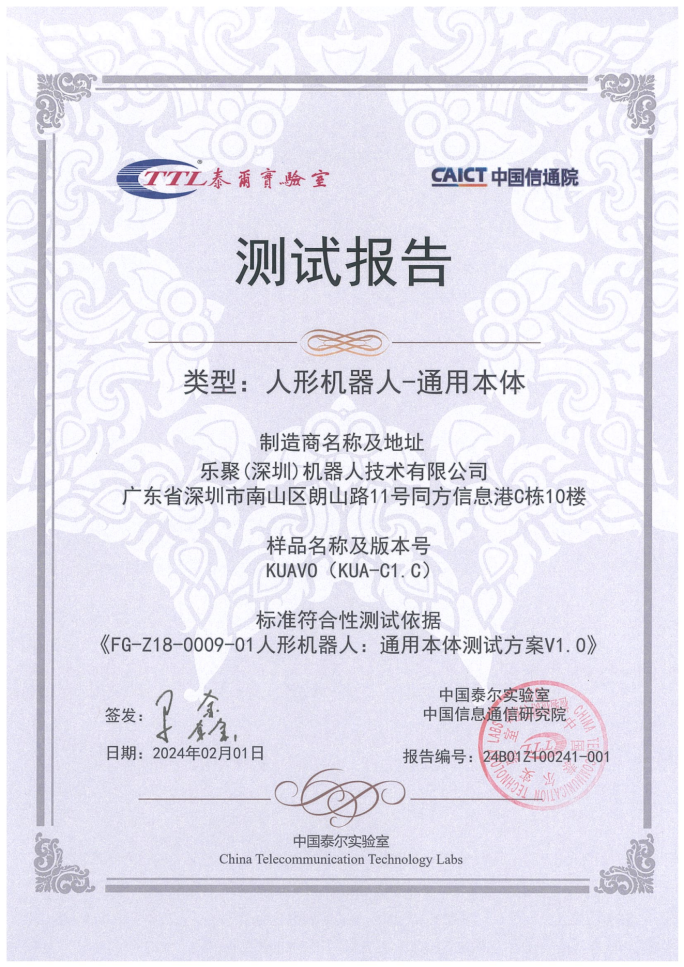In October 2023, the Ministry of Industry and Information Technology issued the "Guiding Opinions on the Innovation and Development of Humanoid Robots", positioning humanoid robots as "expected to become a disruptive product after computers, smartphones, and new energy vehicles". As a cutting-edge technology with deep integration and development of traditional industrial technology and artificial intelligence technology, humanoid robots are becoming a new focus and a place of contention for scientific and technological competition among major countries. With the empowerment of large-scale model technology, the optimization of the performance of core components, and the promotion of the design of the whole machine and the scale of the manufacturer, the expansion of humanoid robots in industrial, logistics, special, education and other application fields will promote the humanoid robot industry to realize the accelerated application of small-scale structured scenarios in the near future, and is expected to transition to a wider range of semi-open application scenarios such as industry and public services in the medium and long term, and finally realize the universal application of all scenarios.
At present, humanoid robots are in the early stage of industry and commercialization, and there is still a certain gap between the technology and innovation capabilities of ontology manufacturing and system integration enterprises and the international leading level, and the development of the industry is also facing considerable challenges. The first is that the cost is too high to achieve mass production. Components such as high-performance controllers and high-performance motor drives for humanoid robots are expensive. Secondly, humanoid robots need to be strengthened in adapting to complex environments and algorithm collaboration. At present, humanoid robots still have some shortcomings in terms of reliability, movement speed, operation accuracy, endurance and human-machine collaboration, and can only work in specific scenarios and processes. Most humanoid robots can only walk on flat ground and have high requirements for surrounding light and human interference. In addition, humanoid robots will have problems such as battery life, heat dissipation, and lag in the case of insufficient computing power. If all data processing is placed on the robot side, when the humanoid robot is overloaded, it will lead to problems such as poor heat dissipation and low processing efficiency. However, putting all data processing in the cloud can lead to long data processing times, resulting in stuttering and unresponsive humanoid robots.
In order to solve the problems faced by the development of the humanoid robot industry and promote the benign and efficient development of the industry, CTTL Terminal Labs has conducted in-depth research on the development and key technologies of the humanoid robot industry, relying on the laboratory has the testing capabilities of robot motion control, human-computer interaction, power consumption and battery life, electromagnetic compatibility, environmental adaptability, information security, etc., to improve the evaluation supporting tools, build the key technology, safety assessment, application scenario inspection and testing capabilities of humanoid robots, and start the special evaluation action of humanoid robots. Recently, according to the "FG-Z18-0009-01 Humanoid Robot: General Ontology Test Scheme V1.0", the CTTL Terminal Labs has tested the general ontology of humanoid robots from 13 test dimensions in three aspects, such as ontology characteristics, motion control, power consumption and battery life.

After testing and evaluation, the KUAVO humanoid robot of Leju (Shenzhen) Robot Technology Co., Ltd. met the requirements of the scheme during the evaluation process and passed the test.

Leju KUAVO (Chinese "Kuafu") large-size highly dynamic humanoid robot, weighing about 45kg, 26 degrees of freedom of the whole body, its pace speed can reach up to 4.6km/h, fast continuous jump height of more than 20cm, at this stage the robot has been able to achieve task operations, planning and navigation, complex terrain autonomous walking, continuous continuous jumping and other functions.
The launch of the evaluation of humanoid robots plays an important role in standardizing the industry environment, formulating technical standards, and setting a market example. In the future, the Thiel Terminal Laboratory will continue to improve the evaluation system and program of humanoid robots, and according to the development of industry technology, continue to launch more evaluation programs for human-computer interaction, communication capabilities and safety assurance of humanoid robots, and update and iterate the evaluation programs, so as to select excellent products for the industry and provide rich consumer references and suggestions for the public in a professional and fair evaluation way, so as to guide the healthy and sustainable development of the industry.
Contact:
Liu Yuwei
liuyuwei@caict.ac.cn